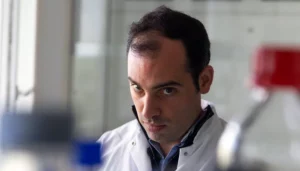Lenne group, together with three other groups, Merkel (CNRS, Marseille), Trivedi (EMBL, Barcelona), and Ruprecht (CRG, Barcelona) – embark on BREAKDANCE project that aims to bring together multidisciplinary researchers to study the mechanisms of how animal body plans develop.
The name, BREAKDANCE, refers to the dynamic interactions between cells in a tissue – their dance that breaks the symmetry.
Symmetry breaking is a recurring phenomenon in biology where similar cells start to make decisions, change their characteristics and develop into different tissues.
The BREAKDANCE goal is to recreate this process at a level that allows us to identify the mechanisms underlying symmetry breaking. The challenge is integrating experimental data from multiple scales with powerful computational modelling methods, which requires combined expertise in biology, physics, and engineering. The researchers will establish a comprehensive methodological toolbox of synthetic bottom-up approaches and functional ex vivo assays. Using embryonic stem cells from mouse, zebrafish, and ultimately humans as model systems, they will study the mechanisms that connect global tissue geometry (shape, size, dimension and physical boundary conditions) with mechano-chemical interactions at the single cell level.
Picture legend
From left to right: Verena Ruprecht, Vikas Trivedi, Pierre-François Lenne and Matthias Merkel.




